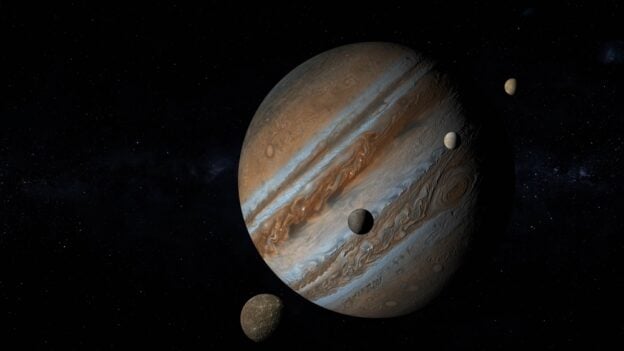Inspenet, September 26, 2023.
The James Webb Space Telescope (JWST) has recorded the presence of carbon dioxide (CO 2 ) in the Tara Regio region of “Europa”, one of Jupiter’s most fascinating moons.
NASA scientists have made measurements that reveal the existence of CO 2 on the surface of “Europa”, Jupiter’s frozen moon. These observations, made by JWST and its near-infrared instrument, provide evidence suggesting a connection between the underground sea of liquid water and CO 2 .
JWST has identified the presence of crystalline CO 2 in the Tara Regio region of “Europe”, an area characterized by its rugged topography and the recent appearance of surface materials. NASA has emphasized that due to the concentrations of CO 2 and its location, the possibility of it coming from external sources, such as meteorite impacts or the influence of Jupiter’s magnetosphere, has been ruled out.
The possible explanation
The scientists responsible for the recent discovery still do not have a clear explanation for the presence of CO 2 on the icy surface of “Europe.” So far, the most plausible hypothesis suggests that Tara Regio’s frozen crust may have experienced fractures, possibly facilitating the exchange of materials between the subsurface ocean and the surface.
Currently, there is an ongoing debate about the relationship between the internal ocean and the ice sheet of this moon. The discovery of CO 2 and other compounds in the past offers the possibility of obtaining more information about the characteristics of the liquid water ocean without directly drilling into the ice at the site.
Tara Regio was also the place where the presence of sodium chloride was detected in 2019 . At that time, astronomers at the WM Keck Observatory in Hawaii performed spectroscopic analysis that revealed the existence of salt in the near-ocean region. In addition to providing significant evidence about the salinity of “Europe’s” sea, astronomers were encouraged that sodium chloride at the surface is an indicator of hydrothermal activity on the seafloor.
“On Earth, life likes chemical diversity: the more diversity, the better. We are carbon-based life. “Understanding the chemistry of Europa’s ocean will help us determine whether it is hostile to life as we know it,” said Geronimo Villanueva, a scientist at NASA’s Goddard Center and lead author of the new moon report.
What is known about “Europe”
“Europe”, like Io, Ganymede and Callisto, is part of the set of Galilean satellites. This name comes from its discovery by the eminent astronomer Galileo Galilei in 1610. Although “Europa” is the smallest moon among these satellites and occupies the sixth position in proximity to Jupiter, it stands out as one of the most investigated celestial bodies due to its potential to host life, despite the extreme conditions of its surface with temperatures that fall to -223°C and a distance of 628 million km from Earth.
“Europe” also exhibits a gravity comparative to that of our planet. Objects on this moon are estimated to fall at a speed of 1,315 m/s², in contrast to the 9.8 m/s² experienced by humans on Earth. This implies that, in the event of an astronaut’s trip to “Europe”, his body weight would be only about a third greater than on Earth, which would facilitate his mobility compared to the Moon or Mars.


